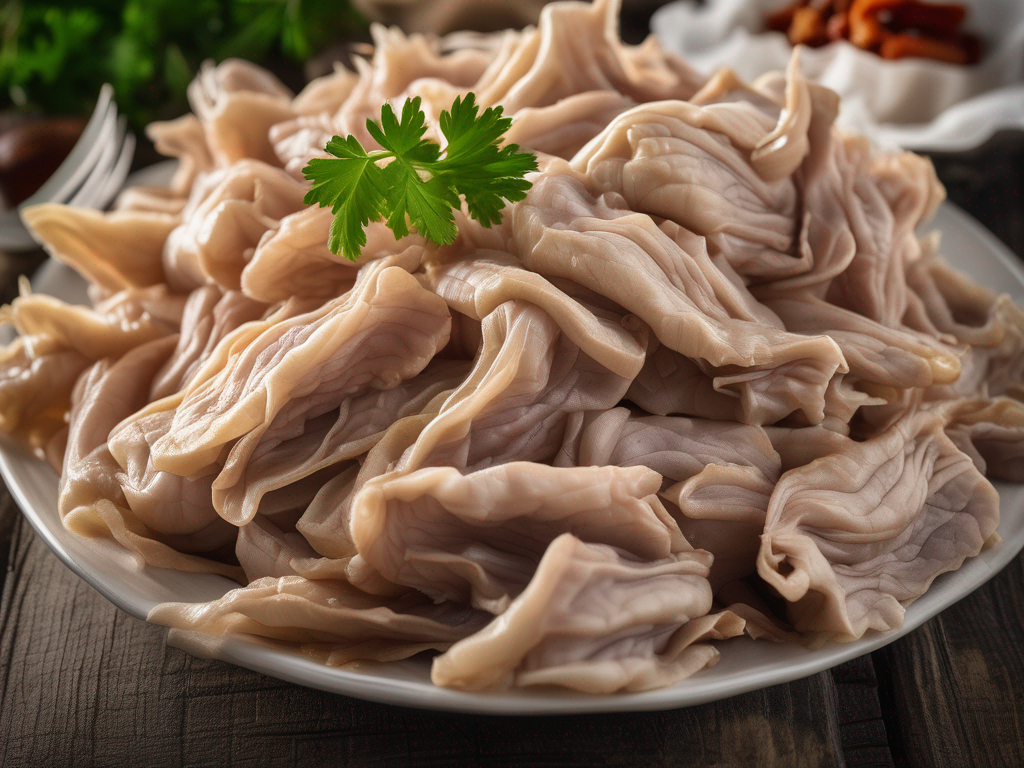
The Ultimate Guide to Safely Preserving Chitterlings (Chitlins) Fresh Raw
Get Your Free Food Safety Cheat Sheet
30 most common foods with instant answers. Print it and stick it on your fridge—completely free!
The Ultimate Guide to Safely Preserving Chitterlings (Chitlins) Fresh Raw
Chitterlings, commonly known as chitlins, are a popular dish in many cultures, especially in Southern cuisine. When properly prepared, chitterlings can be a delicious and nutritious meal. However, due to their nature as the intestines of a pig, chitlins require careful handling and storage to ensure they are safe to eat. In this ultimate guide, we will discuss the best practices for safely preserving chitterlings fresh raw. (Chitterlings chitlins fresh raw)
Understanding Chitterlings (Chitlins)
Chitterlings are the small intestines of a pig and are typically sold fresh raw. They require thorough cleaning and cooking before consumption to eliminate any harmful bacteria that may be present. When handled improperly, chitterlings can pose health risks, so it is essential to follow proper food safety guidelines when preparing and storing them.
Purchasing Chitterlings
When purchasing chitterlings, it is crucial to buy them from a reputable source that follows food safety regulations. Look for chitterlings that are fresh, with a clean and odor-free appearance. Avoid buying chitlins that are discolored, slimy, or have a foul smell, as these may indicate spoilage.
Cleaning Chitterlings
Before preserving chitterlings, they must be thoroughly cleaned to remove any remaining waste and bacteria. Follow these steps for cleaning chitlins:
- Rinse the chitterlings under cold running water.
- Use a food-safe cleaning solution or a mixture of water and vinegar to soak the chitlins for at least 30 minutes.
- Scrub the chitterlings with a brush to remove any debris or residue.
- Rinse the chitlins again under cold water until they are clean.
Storing Chitterlings
Proper storage is essential to ensure the freshness and safety of chitterlings. Follow these tips for storing chitlins:
- Store chitterlings in the refrigerator at a temperature below 40°F (4°C).
- Place the chitlins in an airtight container or resealable bag to prevent cross-contamination.
- Use chitterlings within 1-2 days of purchase for the best quality.
- If you are not planning to use the chitlins immediately, they can be frozen for up to 6 months.
Freezing Chitterlings
Freezing chitterlings is a convenient way to extend their shelf life. Follow these steps for freezing chitlins:
- Pat the chitterlings dry with paper towels to remove excess moisture.
- Place the chitlins in a freezer-safe container or bag, removing as much air as possible.
- Label the container with the date of freezing.
- Store the chitterlings in the freezer at 0°F (-18°C) or below.
Thawing Chitterlings
When ready to use frozen chitlins, it is essential to thaw them safely to prevent bacterial growth. Follow these methods for thawing chitterlings:
- Thaw chitterlings in the refrigerator overnight.
- Alternatively, you can thaw the chitlins in a bowl of cold water, changing the water every 30 minutes.
- Do not thaw chitterlings at room temperature, as this can promote bacterial growth.
Safety Tips for Handling Chitterlings
When handling chitlins, it is crucial to follow food safety guidelines to prevent foodborne illness. Here are some safety tips for handling chitterlings:
- Wash your hands thoroughly before and after handling chitterlings.
- Use separate cutting boards and utensils for raw chitlins to prevent cross-contamination.
- Cook chitterlings to an internal temperature of at least 165°F (74°C) to ensure they are safe to eat.
- Refrigerate or freeze leftover cooked chitlins within 2 hours of preparation.
Conclusion
In conclusion, properly preserving chitterlings fresh raw requires careful handling, cleaning, and storage practices. By following the guidelines outlined in this ultimate guide, you can enjoy delicious and safe chitlins with confidence. Remember to always prioritize food safety when preparing and storing chitterlings to protect yourself and your loved ones from foodborne illnesses.
For more information on chitterlings chitlins fresh raw, visit [this link](/food/chitterlings chitlins fresh raw). (Chitterlings chitlins fresh raw)
Related Posts
Here are some other articles you might find helpful:
Authoritative Food Safety References
These agencies and university labs inform every tip and health precaution we publish.
USDA FoodKeeper – Cold Storage Guidelines
Official refrigerator, freezer, and pantry timelines maintained by the U.S. Department of Agriculture.
Visit USDA FoodKeeperFDA Produce Safety Rule & Grower Guidance
Field-to-fridge handling practices that prevent contamination of fruits, vegetables, and leafy greens.
Visit FDA Produce SafetyCDC Foodborne Illness Prevention Hub
Surveillance-backed guidance on pathogens, symptoms, and steps to reduce foodborne illness risk.
Visit CDC Food SafetyUC Davis Postharvest Technology Center
University research detailing optimal storage atmospheres for produce after harvest.
Visit UC Davis PostharvestPenn State Extension – Home Food Preservation & Safety
Peer-reviewed extension bulletins on safe canning, chilling, and reheating practices.
Visit Penn State ExtensionGet Your Free Food Safety Cheat Sheet
30 most common foods with instant answers. Print it and stick it on your fridge—completely free! Want more? Upgrade to the complete guide with 70+ foods.
Scan your food directly and get instant safety info using our AI-powered camera feature.